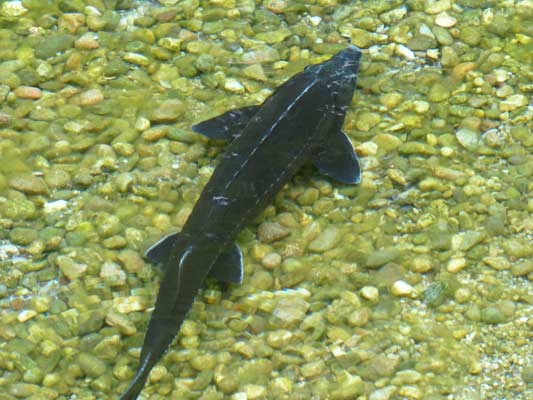Large aquarium
The large aquarium represents fish from the family of sturgeons. The largest among them is beluga, one of the largest fish in the world. A specimen weighing three and a half tons was caught in the river Volga. Most fish species either live in freshwater or in the sea, and just a few move between both habitats, the main reason for this adaptation being spawning.
Beluga can live up to a hundred years. Until spawning it lives on the sea bottom, and then starts a long journey to freshwater. Out of all sturgeons, beluga migrates furthest upstream until it reaches a place where it starts spawning; this is the main reason for its vulnerability. Namely, because of its size, in river habitats it becomes an easy prey to man. Otherwise, sturgeons are one of the oldest fish species, dating back to the age of dinosaurs. These fish used to swim in our rivers, for example the river Kupa. Due to construction of the hydroelectric power plant Đerdap on the border between Serbia and Romania these fish have become completely extinct in our waters. Considering that fish migrate during the search for food, shelter and places for spawning, construction of hydroelectric power plants which can stop migration should be given a lot of thought to.
Unlike beluga which spends its life in the sea, and migrates to rivers during spawning, eel is a different type of a migratory species which spends its life in a river, and spawns in the sea.
In early spring, at the stage of sexual maturity, eels start their wedding journey by swimming down a river, travelling to Sargasso Sea. They spawn at the depths of 500 to 1000 m. Each female lays around a million eggs. After spawning adult specimens die. Eel larva is transparent, and it is called glass eel. Gulf Stream carries larvae through the Atlantic Ocean to the coasts of Europe. At the age of four, eels enter rivers where they live until they reach sexual maturity, on average at the age of 9.
